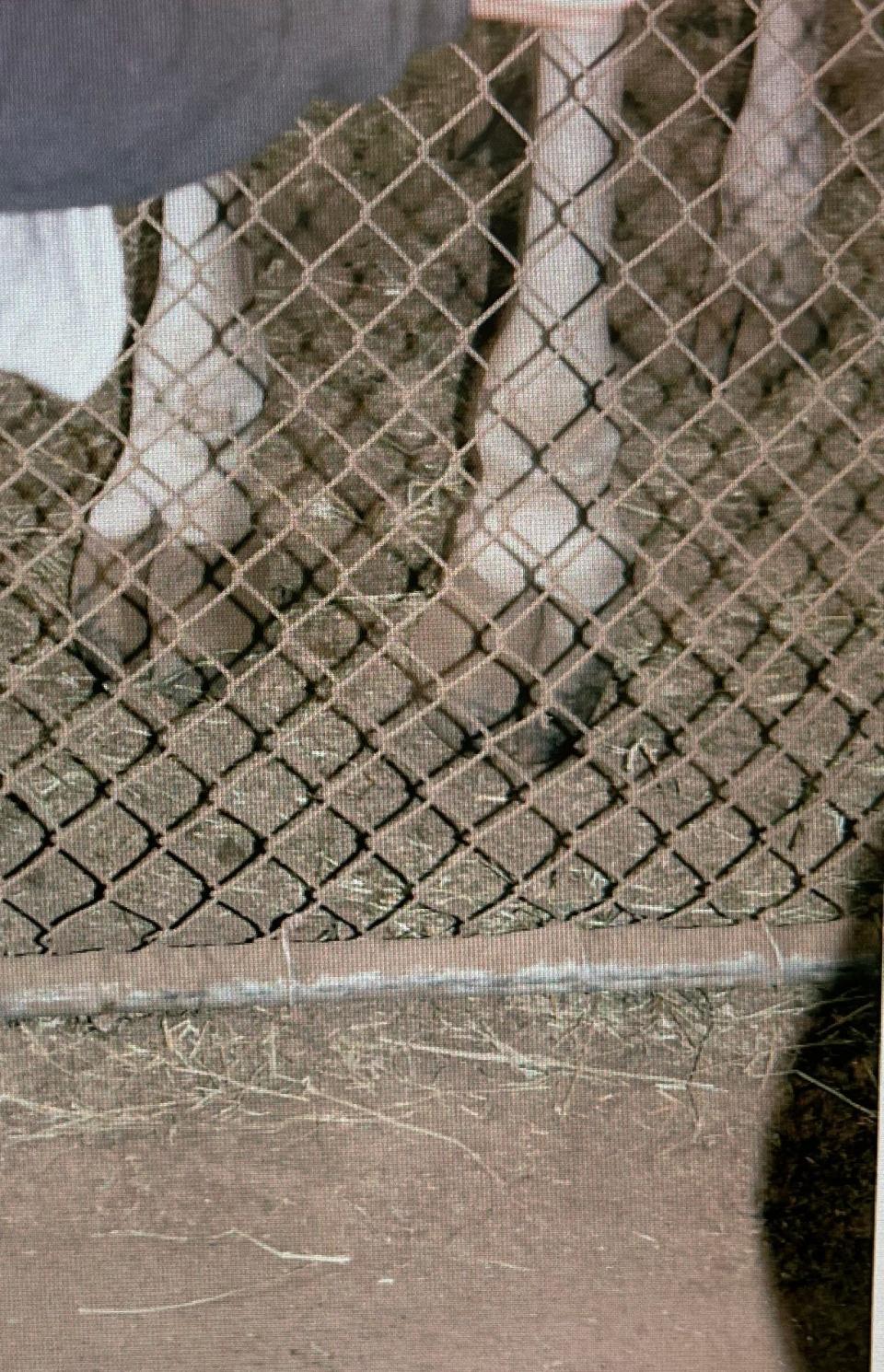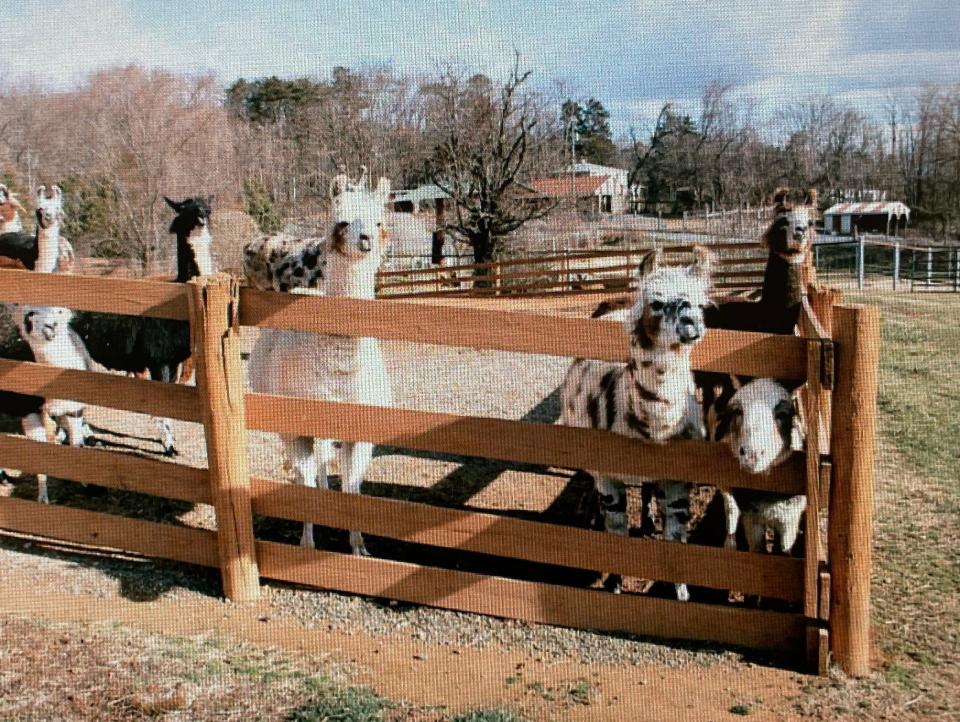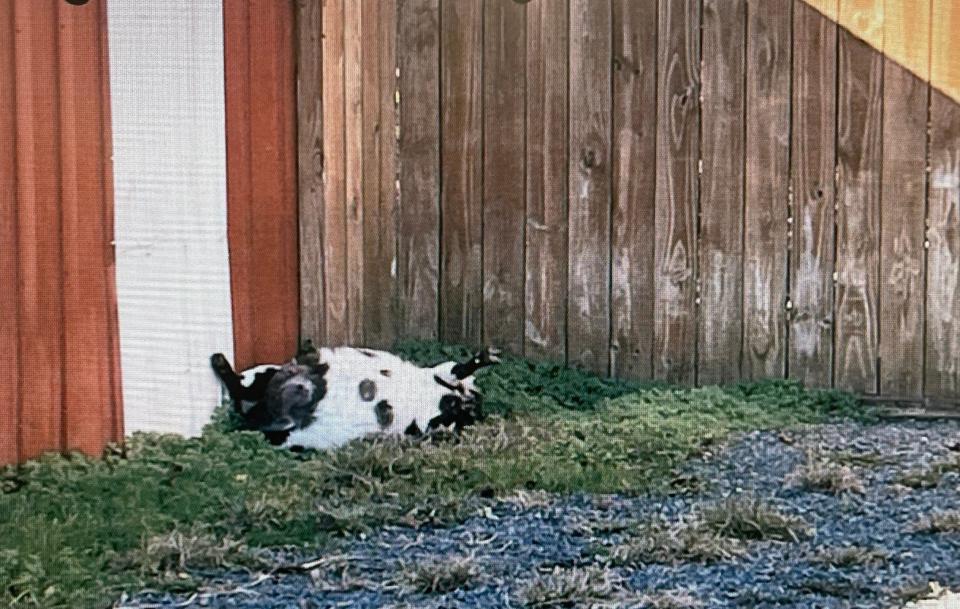Natural Bridge Zoo begins defense: Day Five
This story is part of our ongoing coverage of The Natural Bridge Zoo's legal problems starting with a Dec. 6, 2023 search warrant. To catch up from the beginning, click here.
LEXINGTON – Attorney Michelle Welch and Rockbridge County rested the case against Natural Bridge Zoo on Friday, March 1.
The final county witness testified about the four giraffes left in the zoo's care after the Dec. 6 and 7 warrant execution. The jury will decide if the 100 animals seized will return to the zoo or not. Of those 100 animals, the giraffes were the only animals left behind.
Natural Bridge Zoo's defense team began presenting witnesses after lunch on the fourth day of testimony, fifth day of the trial.
Giraffe expert is the county's final witness
The last witness for Rockbridge County was veterinarian Amy Phelps, a specialist in giraffe care. She expressed many of the same concerns she did during the General District court hearings.
The three female giraffes, Little Girl, Valentine and Wrinkles, were kept in one pin while the single male giraffe, Jeffrey, was kept in another.
The female giraffes dealt with “back-to-back” breeding. Phelps testified she saw visual signs of the breeding on the giraffes’ bodies, and a review of the zoo’s records confirmed this. For example, the records allegedly showed Valentine having a calf, then immediately bred again. No calves were found when the zoo was searched.
When the Natural Bridge Zoo began over 50 years ago, it was not common practice to have a training program for giraffes, as most zoo owners felt they were not intelligent enough to warrant one.
The new “basic standard” is to have the animals on a positive-reinforcement based training program, although there was not a written standard mandating such. Phelps testified she did not find such a program in place.
Training also allows zoos to teach the giraffes to allow for hoof care without sedation. Before such programs, giraffes had to be sedated before any work could be done on their feet. Phelps called the sedation one of the most dangerous procedures a veterinarian could perform. A training program often teaches giraffes to let groomers take care of their hooves without requiring a sedeative.
Rockbridge County offered video of the giraffes “flipper” walking, similar to how people wearing swimming flippers walk, due to long, untrimmed hooves.
“Just existing in those feet” could be “uncomfortable,” Phelps said. This problem would be exasperated by the concrete floor of their pins, covered just by a layer of pine straw, where they could stand for 16 hours of the day.

When zoo staff arrived to take care of the giraffes on Dec. 6, Phelps said the giraffes appeared to be afraid of staff, saying she was “surprised how nervous they were,” and “They looked terrified.” She highlighted her concern by describing the way staff allegedly brought the giraffes outside.
She demonstrated, standing up, holding her arms all the way out and making her chest broad.
“Get back! Go! Go!” Phelps yelled, clapping her hands.
Phelps examined a photo, showing an enrichment activity log for the giraffes. The only entry listed on the page was “butter leaves” over ten months before the search warrant was executed. Phelps felt the animals should be seized, in part, due to lack of enrichment, citing the log, the lack of a training program, and the animal’s behavior.
She asked the jurors to imagine being trapped in their own home with nothing to read, no furniture to sit on, no television to watch, nothing to do. The “highly intelligent” giraffes would live in a perpetual state of boredom. Jeffrey would walk in circles “in that stall until he wore a track into the pine shavings.”
“It’s prison without enrichment,” Phelps testified. “If we put ourselves in their situation, we can understand that.”
With the end of her testimony, Welch’s case for seizure came to an end.
A motion to dismiss the county’s evidence
Before the defense witnesses began, attorney Aaron Cook argued the county’s case should be thrown out. He based the case on several issues, arguing the specifics of the law. Because the standard set in Virginia State Code (§ 3.2-6570. Cruelty to animals; penalty) reads “deprives any animal of necessary food, drink, shelter, or emergency veterinary treatment,” Cook argued that the state had not proven their case by only asking their experts if the zoo had provided “adequate” food, drink, and care.
“I will admit that the general assembly did a very poor job of writing this statute,” Cook said.
Cook argued the state could not have the power, in a “free county,” to seize a sheep because it is overweight and has a malformed horn.
Welch disagreed, pointing to § 3.2-6569. Seizure and impoundment of animals in the Virginia State Code.
“The animal doesn’t have to be on deaths door … for the government to go in and seize the animal,” Welch argued.
Judge Russell sided with county, refusing to throw out the case as presented so far.
Defense witnesses take the stand
Natural Bridge Zoo's defense team began offering witness testimony after lunch on Friday.
Lois Magill picked up two llamas, the minidonkey, the sheep, and the donkey from Natural Bridge Zoo on Dec. 6 and 7. A known animal keeper, she was recruited to house the seized animals after the warrant execution. Magill felt the animals were in “good shape,” testifying that she “wished” her animals behaved the way the Natural Bridge Zoo animals did.
Magill’s testimony runs parallel to a county witness, veterinarian Samantha Moffitt. For example, Moffitt testified Patticake, the minidonkey, had facial swelling, but was initially unsure what was causing it. Magill testified to receiving a call from Natural Bridge Zoo, telling her the minidonkey needed someone to remove “crud” from its mouth after it ate. Magill did so, telling the jury the minidonkey was “clearly” used to it. Moffitt requested a sedated oral examine, but no results from an oral examine were offered. Despite Magill’s testimony to Patticake’s good health, Moffitt testified Patticake had parasitic worms.

Deputy Tanner Fix of the Rockbridge County Sheriff’s Office testified to responding to a call to the zoo.
After Christine Bozcar’s trip to the zoo in October, she had someone in the vehicle with her call local authorities to anonymously report seeing a dead goat in one of the exhibits. Fix responded to the call, going out to the zoo. Fix is not the animal control officer, who was out on another call at the time.
According to Fix’s testimony, he was first greeted by staff, then spoke with Gretch Mogensen, the zoo’s manager. Staff told him the goat had died in childbirth. The body was removed from the exhibit when staff discovered it. However, he did not inspect the exhibit himself, taking staff’s word that the body had already been removed. He left after the conversation.

Improving conditions for the giraffes?
The defense seemed to make the case of improving conditions for the giraffes. As pointed out several times by Welch during the General District hearings, Dadone was not present to examine the giraffes on the day of the raid, the day the evidence presented was gathered. The giraffes remained on site because the county was unable to transport them with their available equipment. This also gave the zoo a case to improve conditions, before the trial and before outside consultants saw the animals.
Lisa Dadone, a consultant on proper giraffe husbandry, came to the zoo in two clusters of visits. The first visits were on Jan. 3 and 4, where she got to know the four giraffes. The second time, on Feb. 25 and 26, she reviewed improvements the zoo made since the first visit.
Dadone testified the giraffes seemed to like the zoo staff, approaching them without caution. A photo was presented of Jeffrey interacting with a member of zoo staff, eating bamboo twigs as the staff member stands by the fence.
The giraffe hooves were overgrown, Dadone said, but “not the worse” she has seen. She presented photos of the bottom of Jeffrey’s feet. When a giraffe walks in circle in their stall, they often develop ulcers on the bottom of their feet. Jeffrey, when she visited in January, showed no signs of ulcers.
Phelps also went back to Natural Bridge Zoo on Feb. 17. Many of the problems with the giraffes had been taken care of by then, she testified.
“Well, most of them,” she added. She did not list specifics beyond safety concerns with a gap in the pin’s cage.
This article originally appeared on Staunton News Leader: Natural Bridge Zoo begins defense: Day Five

